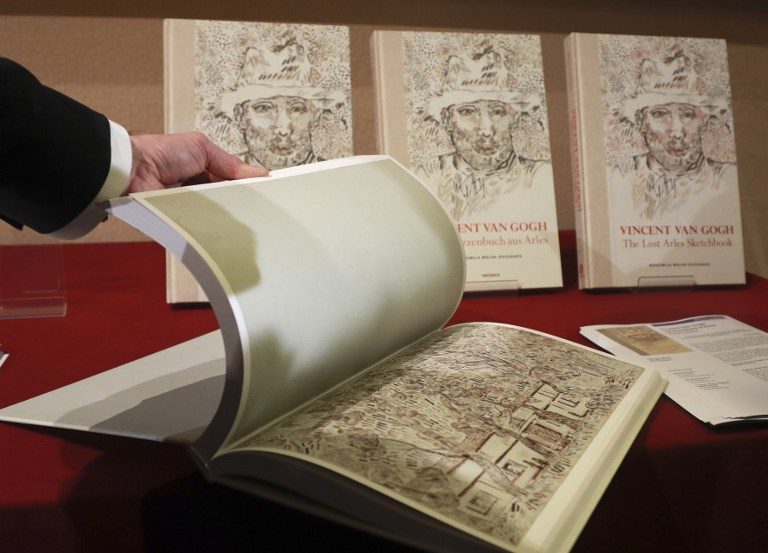SUMMARY
This is AI generated summarization, which may have errors. For context, always refer to the full article.

PARIS, France – The row over the discovery of a “lost” Vincent Van Gogh notebook took a dramatic new turn Thursday, November 17, with experts who back the find demanding a public debate with the Van Gogh Museum, which has dismissed it as a fake.
In a point-by-point rebuttal of the museum’s damning assessment of the sketchbook – apparently from the artist’s legendary stay in the French city of Arles – the experts also questioned its “monopoly” on deciding what is and is not by Van Gogh.
The main expert behind the find, Canadian art historian Bogomila Welsh-Ovcharov, hit back at their questioning of its authenticity, while British scholar Ronald Pickvance said there was no chance the 65 drawings were forgeries.
“These are absolutely OK, from one to 65,” he said. “End of song, end of story.”
The 85-year-old scholar had earlier declared the ledger to be “the most revolutionary discovery in the entire history of Van Gogh’s oeuvre”.
Welsh-Ovcharov accused the Van Gogh Museum of basing its verdict on photographs of the drawings rather than properly examining 10 originals which she brought to them.
Her book detailing the find, Vincent Van Gogh, the fog of Arles: the rediscovered sketchbook, is being published in 6 countries on Thursday despite the controversy.
Journal found
Welsh-Ovcharov said they had uncovered a small journal from the Cafe de la Gare in Arles – where Van Gogh stayed – which “records that on May 20, 1890, Dr Felix Rey (who had treated Van Gogh’s severed ear) visited the cafe on behalf of the artist” and left a large book of drawings.
Her French publishers Le Seuil said, “To put an end to this controversy, we are offering the Van Gogh Museum the possibility of jointly organizing a public debate between experts.
“This will also be an opportunity to shed light on the conditions under which the Van Gogh Museum is claiming the de facto right to a monopoly of attribution,” their statement added.
But the museum’s senior researcher Dr Louis van Tilborgh told Agence France-Presse on Wednesday, November 16, that even after reading the book “we would not be changing our opinion. We think the author of the drawings is not Van Gogh but someone imitating him.
“Someone has done their best to make out that that the drawings could be by Van Gogh. They have imitated his style and iconography. But in imitating him, errors have appeared,” he added.
“It is hard to say when these imitations were done, by whom and why,” Dr van Tilborgh added.
Wrong in the past
Le Seuil has accused the Van Gogh Museum of twice rejecting work it later accepted as the artist’s.
And Australian researcher Felicity Strong of the University of Melbourne told Agence France-Presse on Thursday that “the Van Gogh Museum has been wrong in the past.
“Their unveiling of a long-lost painting ‘Sunset at Montmajour’ was examined by curators at the museum at least twice before they reassessed it in 2012 and changed their minds,” she said.
Van Tilborgh insisted that the museum has been “very transparent… about its errors in the past, but we believe there are very few arguments in favor” of the sketches being Van Gogh’s.
Professor Stephen Farthing, Professor of Drawing at the University of Arts London, said the “onus of proof has to go back to the person who says they are real. I wouldn’t get into a fight with the Van Gogh Museum myself.”
“You need a long conversation with other experts and not go at it alone,” he said.
Strong, who has studied several forgery cases, said that “there are many cases of great scholars and curators being fooled by forgeries when faced with the find of a career”.
However, she warned that some arguments against the drawings on the basis of Van Gogh’s “stylistic development and common use of materials” were debatable.
“It is difficult to make substantive claims that the artist worked only in a particular manner at any one time. Like the concept that the artist never made a bad work, they were human and like us change up their working practices in unpredictable ways,” she said. – Rappler.com
Add a comment
How does this make you feel?
There are no comments yet. Add your comment to start the conversation.